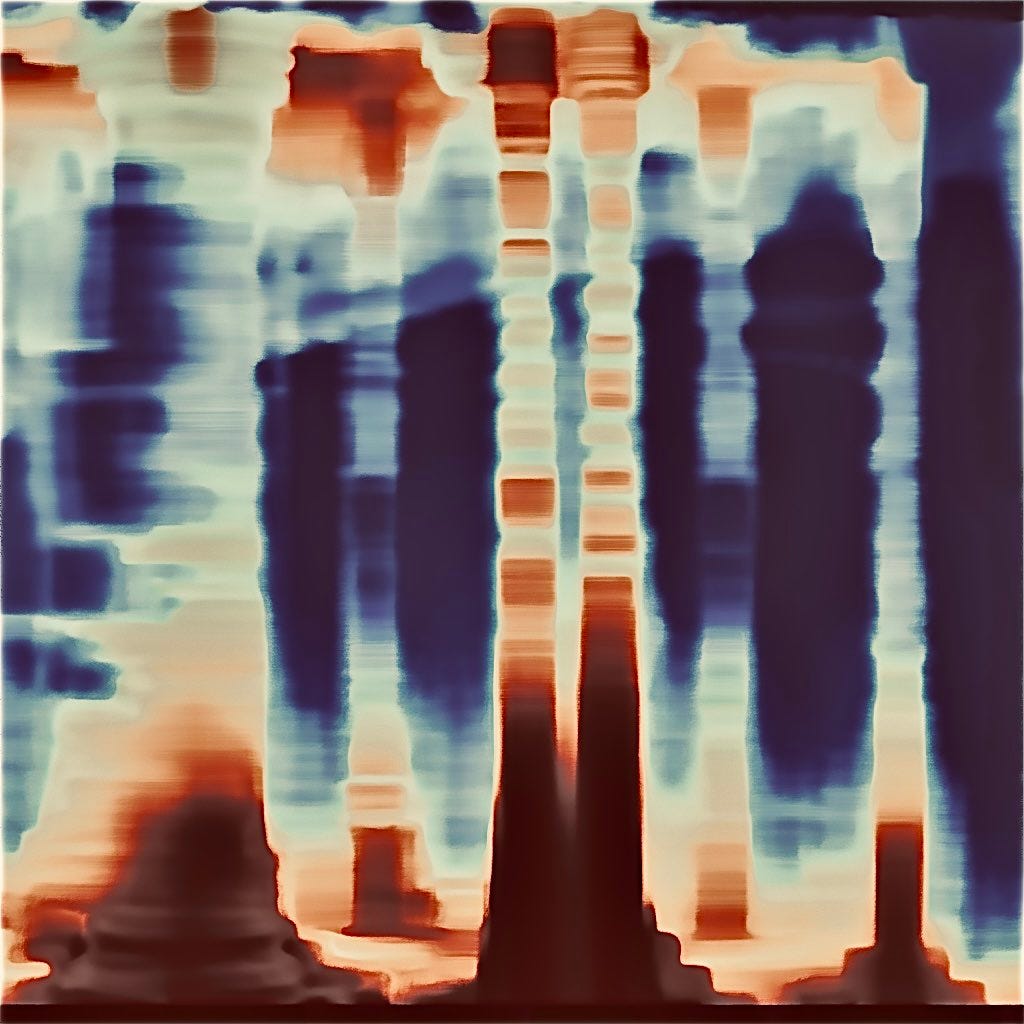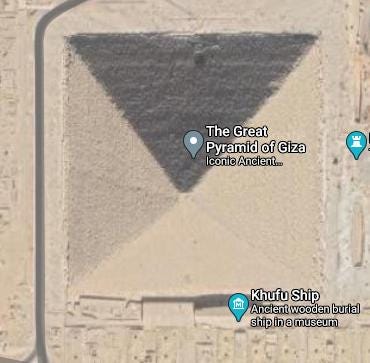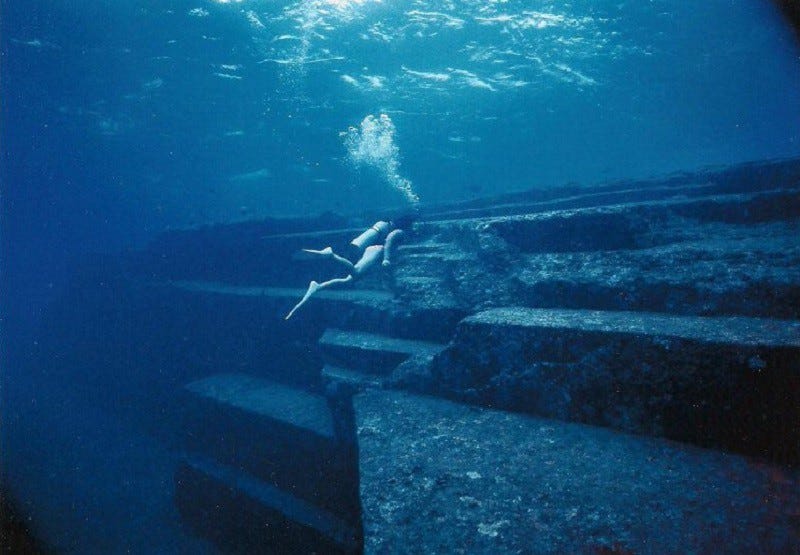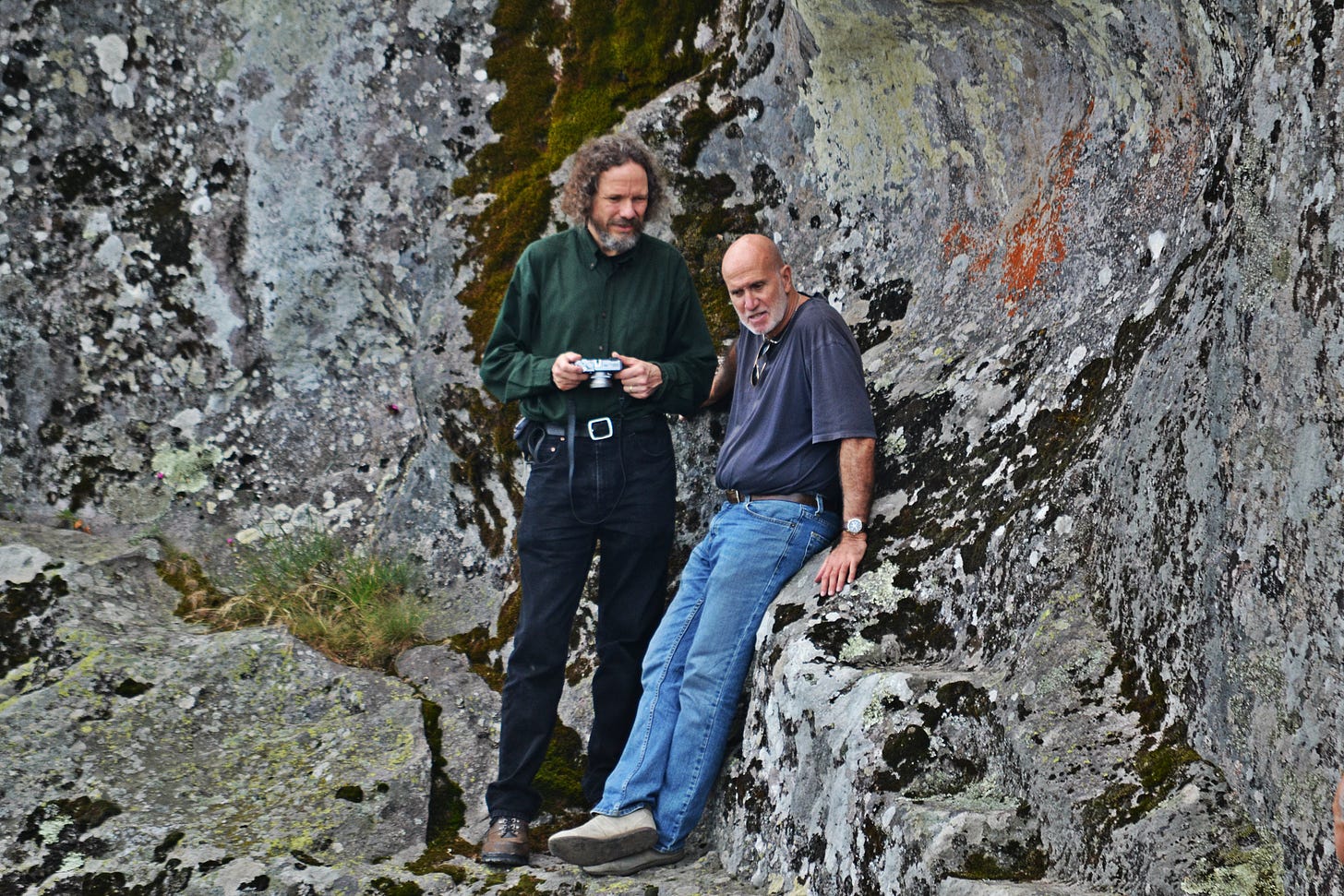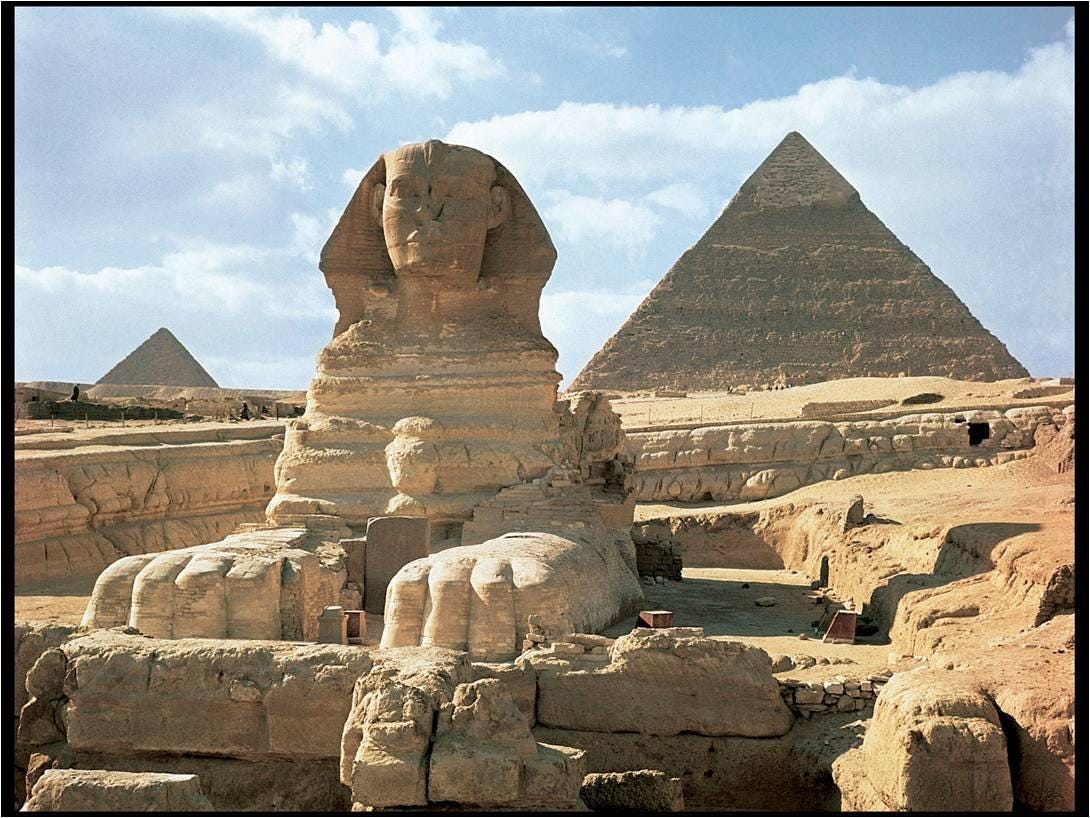Unveiling the Giza, part 1: What and When
The oldest of the Seven Wonders is not what and when conventional science believes it to be. The latest discovery about the pyramid's underground structures just adds one layer to the larger enigma.
The Great Pyramid of Giza (also known as the Pyramid of Khufu or the Pyramid of Cheops) is the oldest and largest of the three pyramids in the pyramid complex bordering present-day Giza in Greater Cairo, Egypt. Conventional historians claim that it was allegedly built around 2560 BC as a tomb for Fourth Dynasty Egyptian pharaoh Khufu (or Cheops) by moving huge stones from a quarry and dragging and lifting them into place.
Those claims are not plausible to several researchers and there is much more in those pyramids than historians are willing or able to grasp.
The Great Pyramid of Giza is considered the oldest of the Seven Wonders of the Ancient World1, and the only one to remain largely intact. The general view of conventional science is that all ancient civilizations, in comparison to us, were primitive, much less advanced, and had basically no understanding of what nature is, since they had a mystical, unscientific attitude and perception of reality. However, the pyramid presents to modern man a very hard problem to solve, in many ways.
In addition to the other amazing technical and structural features of the Great Pyramid that will be described in below, something has recently been discovered also beneath the pyramids. On 15 March 2025, an interdisciplinary team of Italian researchers - Professor Corrado Malanga, Dr Filippo Biondi and Dr Armando Mei - announced a discovery beneath Egypt's Giza Plateau: a vast complex of underground chambers and shafts extending nearly two kilometres beneath the pyramids.2 The researchers used advanced radar imaging technology (Synthetic Aperture Radar, or SAR) to scan the underground without excavation. Malanga, Biondi and Mei unveiled high-resolution 3D radar scans that they say reveal multiple levels of unknown structures hidden deep beneath the Great Pyramids.3
AI researcher Brian Roemmele4 began working with these discoveries and instructed the AI model to re-examine the SAR data to gain a better "understanding" of the angle and parallax. The AI model was able to produce the following first images of the possible huge underground structures (pillars):
These findings could serve as a starting point for further research and discoveries into the purpose and function of the Great Pyramids, as well as rethinking the conventional narratives about them.
Main characteristics of the Great Pyramid
The Great Pyramid is considered a regular four sided pyramid, the length of each side at the base averaging 755.75 feet (230 metres) and its original height being 481.4 feet (147 metres). Many of the casing-stones and inner chamber blocks of it fit together with extremely high precision. Based on measurements taken on the north-eastern casing stones, the mean opening of the joints is only 0.5 millimetres (0.020 in) wide.
The accuracy of the building is such, that the base is level to within just 2.1 centimeters. The deviation of the sides from the cardinal directions show a very small deviation (3 minutes 6 seconds, or 0.0516666... degrees). The greatest difference in the length of the sides reportedly is 4.4 centimeters.
Egyptologist William Flinders Petrie (1853-1942) described such phenomenal precision as “the finest opticians work on a scale of acres”; work of this calibre is beyond the capabilities of modern technology. He stated that:
“The faces [of the original casing stones, some of which weighed over 15 tons] were so straight and so truly square that when the stones had been placed together the film of mortar between them was on the average no thicker than a man’s nail, or 1/50 inch over an area of 35 square feet. . . . Merely to place such stones in exact contact would be careful work, but to do so with cement in the joint seems impossible...”5
According to engineer and master craftsman Christopher Dunn6, the evidence shows that the Egyptians possessed ultra-modern tools, including tubular drills that could cut granite with a feed rate 500 times greater than that of modern diamond drills.7
Egyptologists have asserted that the Great Pyramid was built to be a tomb and looters allegedly removed Khufu’s mummy, along with the riches presumably buried with the pharaoh, before the excavations took place. However, no mummies nor significant indications of a funeral site have been found inside the Great Pyramid, leading several researchers to doubt that it was ever intended as a tomb.
Within the pyramid there have been found passages, galleries, corbelled stone walls, an unfinished lower chamber, the King’s Chamber, the Queen’s Chamber, five Relieving Chambers. In 2017 a study found a large cavity, unknown to science till that moment. According to the Japanese research team the void is completely different from previously identified construction spaces.
The Great Pyramid of Giza is the only pyramid in existence that appears to be eight-sided, or with a small depression at the center of the faces that gives that impression. William Flinders Petrie had already managed to observe a definite hollowing of the core masonry on each side of the Pyramid. This unique characteristic is not always visible, although experts have known about it for several decades. The eight sides of the pyramid are thought to have been spotted for the first time (in modern times) in 1940, when British Air Force Pilot P. Groves flew above the Giza plateau and noticed the concavity. The pilot even took pictures of the curious feature. In the Great Pyramid, the packing-blocks were laid in such a way that they sloped slightly inwards towards the center of each course, with a result that a noticeable depression runs down the middle of each face — a peculiarity shared, as far as is known, by no other pyramid. There are different theories that try to explain why it was not noticed for a long time. Among them, one states that that it can only be visible during dusk and dawn of the spring and autumn equinox. Others have ventured that the pyramid causes certain distortions in the surrounding area, which would cause the illusion.
Several questions should be asked about the pyramids, e.g.:
What was the purpose of such monumental constructions?
When were they built?
How were they built?
What the effects of the pyramids?
In the following, some elements and possibilities will be pointed out to try to answer the profound questions about those achievements of our past.
What was the purpose of such monumental constructions? When were they built?
There are pyramids all over. The largest and more durably built are perhaps those of Egypt and America, in Mexico, and Central America in general. Some have pyramidal like shape, not exactly the geometric solid known as pyramid. This fact alone casts doubt on the claim by the historians that the Giza Pyramid was built as a tomb for the pharaoh.
Similar megalithic structures and ancient archaeological treasures
Doubts about the claims of conventional archeology are reinforced when we see and learn about, for example, the pyramid of Chichén Itzá (Temple of Kukulkán) on the Yucatan Peninsula.
Mexico
The temple of Kukulkán has four staircases, of 91 steps each, which in total sum 364. With the upper platform, it adds up to 365 in total. Each step represents the days of the Mayan Calendar. During the spring equinox, cast light and shadow movements, like a serpent, descend the steps of the Pyramid. It looks like a 120 ft length snake is creeping downstairs till it joins a huge serpent’s head at the bottom of the stairway. It appears for a few days around 4pm in March between 19th and 23rd (the dates for the spring equinox may change from year to year). But the light effect is most obvious on the actual date of the spring equinox.8

Cambodia
The temple Nagkon-Wat (Angkor-Wat), is thought to have been built by Suryavarman II (1113-1150) as his capital9. However, local records, mythology and several researchers (including Adolf Bastian, one of the Europeans to rediscover Angkor Wat in 1861) have not been so sure about the creators of these amazing structures. It has also been hinted that Angkor Wat may have been built by the same builders as the Giza Pyramid10.
The portuguese friar António da Madalena wrote in 1586 that such extraordinary construction is not possible to describe with a pen, particularly since it is like no other building in the world. That the stones, as smooth as polished marble, were laid without mortar with very tight joints that are sometimes hard to find. Further, he said that the blocks were held together by mortise and tenon joints in some cases, while in others they used dovetails and gravity. The monument was made out of 5 to 10 million sandstone blocks with a maximum weight of 1.5 tons each.
There are two access points to enter and exit the temple complex, one west with a sandstone causeway (built later) and one to the east, as well as four towers inside the temple complex indicating the four cardinal points11.
The temple itself has brought many questions. Researcher Eleanor Mannika considers that Angkor-Wat is a solar temple, with a striking spring equinox alignment that marks both the beginning of a solar year and the beginning of a journey into the temple12. In this same book she explores the numerical and cosmological meaning behind the temple. Another finding worth emphasizing is that the Angkor-Wat temple's main tower aligns to the morning sun of the Spring Equinox. According to the 13th-century Chinese traveller Zhou Daguan, some believed that the temple was constructed in a single night by a divine architect13.
Cuba, Bermuda and Japan
Near Cuba, a scientific expedition found a submerged pyramidal complex14, another pyramidal complex (of crystal or crystal-like material) in the Bermuda triangle15. Similarily, the Yonaguni submerged monolithic structures16, near Japan, has not helped defend the official position of historians and other specialists in the history of human civilizations on the planet. It seems that things have not occurred the way they are portrayed. The Yonaguni structures have caused quite a controversy. In a National Geographic documentary, experts take different positions, some even claimed that structures such as the ones shown have been caused by water erosion.17
The fact that pyramids are everywhere indicates that they had something in common to many different kinds of human groups, in many different places of the planet. The precision of the cuts, the impossible placement of the rocks, the difficulty lifting those huge stone blocks even with modern cranes.
Researcher Peter Tompkins in his "Secrets of the Great Pyramid" (1971), argues that the Great Pyramid of Giza reflects a far more advanced understanding of science and engineering than typically attributed to ancient Egyptian civilization at that time (around 4th century BC). Tompkins highlights that the pyramid was not merely a tomb but a multifunctional monument—possibly an astronomical observatory, geodetic marker, or geometric model of the Northern Hemisphere. Such a complex view of the purpose of this ancient wonder of the world is shared by several other researchers, such as Graham Hancock, Colin Wilson, etc.
It seems to be high time to pay more attention to the so-called legends, preserved by word of mouth, in the memory of the peoples. All of those examples point to the existence of human knowledge and civilizations much older and extensive than what is recognized by conventional science and authorities.
The pyramids of Giza are much older than thought
Conventional historians claim that the pyramid of Giza was allegedly built around 2560 BC as a tomb for Fourth Dynasty Egyptian pharaoh Khufu (or hellenized Cheops) by moving huge stones from a quarry and dragging and lifting them into place. Those claims are not plausible to several researchers and there is much more in those pyramids than historians are willing or able to grasp.
The Great Pyramid has been determined by conventional archeology to be about 4,600 years old by two principal approaches:
indirectly, through its attribution to Khufu and his chronological age, based on archaeological and textual clues; and
directly, via radiocarbon dating of organic material found in the pyramid and included in its mortar.
The indirect evidence is mainly based on ancient authors such as the ancient Greek historian Herodotus, who wrote in the 5th century BC, and later Diodorus Siculus, who visited Egypt between 60 and 56 BC. Herodotus lived more than 2000 years after the alleged construction date of the pyramid, which means that Herodotus obtained his knowledge mainly from a variety of indirect sources, including tales from local officials and priests, Greek immigrants, etc.
Radiocarbon dating of organic material has clear limitations as it uses organic material containing carbon for its samples and is not intended to date inorganic material, such as minerals, rocks and inorganic artifacts etc. Also, radiocarbon dating is generally limited to dating samples no more than 50,000 years old, as samples older than that have insufficient 14C to be measurable.
Schoch: at least 11 700 years old or older
Geologist Robert M. Schoch18, professor from Boston University, has done extensive research on the Great Pyramid and other ancient structures in Egypt, and has come to the conclusion that there are several eras of construction in Egypt, and some of the main constructions are far older than it had been thought. Professor Schoch was first introduced to John Anthony West (the author of “Serpent in the Sky”), who was searching for someone that could scientifically prove the significant weather and rain erosion of the pyramids. This started a fruitful collaboration, which resulted in a documentary on the Sphinx water erosion hypothesis.19
Robert Schoch has mentioned the influence of his grandmother’s (who was a theosophist) library in his attitude to keep an open mind and always follow the evidence where ever it leads. When little, he used to read from her library, and held conversations with her. In his own words, “reading theosophical works allowed to expand the horizon, and to see that perhaps the dogma of the day is just that, the dogma of the day”.20 In the following Robert Schoch explains his hypothesis about the pyramids complex (clip from the Joe Rogan Podcast):
He admits that when he first went to Egypt, he thought that he would prove John A. West wrong, but shortly after seeing the Sphinx he changed his mind.
The Sphinx is part of the Great Pyramid Complex, the head faces east, the rising sun. His research of the Sphinx lead him to the conclusion that the accepted geological dating was not correct. The vertical erosion marks present in the Sphinx enclosure can be made only by precipitation coming from above, not from water coming from below, Schoch explains. This, he concludes, must have occurred before the end of the Ice Age, which ended in 9700 BC.

Bauval: at least 12 500 years old
Researcher Robert Bauval has introduced the Orion Correlation hypothesis, which states the relative positions of the three main Giza pyramids match those of the three stars of Orion’s Belt and that the match would have been most precise around 10500 BC, when Orion last reached its lowest point in the sky as part of its periodic ascent and descent resulting from precession. He proposes that the Giza site was laid out (and the Sphinx carved) at this time, the Age of Leo, that is thousands of years before the reign of the Fourth Egyptian Dynasty of pharaoh Khufu.21
Bauval has highlighted that the pyramid of Giza is an extraordinary monument, which is totally outside the realm of classical archeology as it is a legacy from an unknown source, anonymous, and is talking to us in prime numbers, in universal constants and in astronomical concepts.22
Collins: 15 000-12 000 years old
Author Andrew Collins argues that the Great Pyramid, along with other Giza monuments, may date back to the end of the last Ice Age, approximately 15 000–12 000 years ago. His hypothesis is that the Giza pyramids were designed to align with the Cygnus constellation (the Northern Cross or Swan) and the Cygnus Wing stars (Rukh, Sadr, and Gienah). He states that Cygnus held a significant position in the sky around 15 000–12 000 BC, possibly near the celestial north pole due to precession (the slow wobbling of the Earth's axis over a 26,000-year cycle). Collings suggests that its conceptual origins - its planning, site selection or initial construction - may date back to this period by an advanced civilisation and may have been finalised in later periods.
He also links the hypothesis with another astounding landmark, Göbekli Tepe (dated around 9600 BC), that is also aligned towards the Cygnus wing stars and was built by an unknown advanced civilization.23
Possibly well over 15 000 years old
The founder of theosophy and an individual with advanced higher sense perceptions Helena Petrovna Blavatsky (1831-1891) considered the Great Pyramid to be a place of initiation, serving as a temple for important ceremonies. Blavatsky asserted that the Great Pyramid served as a sacred site for initiation rites into secret knowledge passed down from a prehistoric, advanced civilizations. She described it as the everlasting record and the indestructible symbol of the mysteries and initiations on Earth.
She has stated that the Great Pyramid:
“was built ages before [Khufu] and he only desecrated it by giving it another use. In his day no more initiations took place in it and he consecrated it to Tet, or Seth-Typhon [the opposite pole to Thoth].”
She links the Pyramid with the Egyptian Temple of Dendera, some 270 miles south of Giza, and states that since the two zodiacs depicted on the ceilings of the temple show – among other things – the passage of three precessional cycles, or about 78,000 years, the possibility that the Pyramid is of a similar age is worth serious consideration.24
How long did the construction last?
The Great Pyramid is estimated to weigh approximately 6 million tonnes, with about 2.3 million blocks of limestone and granite, some weighing as much as 80 tonnes.
According to a modern construction management study25, it was estimated that the total project required an average workforce of about 14,500 people and a peak workforce of roughly 40,000. Without the use of pulleys, wheels, or iron tools, they used critical path analysis methods, which suggest that the Great Pyramid was completed from start to finish in approximately 10 years at a rate of up to 3 blocks per minute on certain levels.
Let us revise these statements and numbers.
Firstly, it would be very interesting to see how they managed to place blocks weighing several tonnes at a rate of 3 per minute. If anyone has ever watched modern crews working with cranes to place large weights, even a layman will realise that 3 such blocks per minute is simply an impossible feat, even for modern crews.
This would make it even more difficult, the precision of colocation, the precision of stone cutting, how it must be positioned to fit exactly where, in what order. Let’s allow us to play with numbers a little here:
2.3 million blocks of stone, assuming they were able to put in place one stone block every 30 minutes, or two blocks per hour.
That means, at this rate, to obtain the total labor time we must divide 2.3 million by two.
This yields 1 150 000 (one million one hundred fifty thousand) hours.
Assuming they were able to sustain this rate of work (of two stones per hour) during sunlight, 12 hours a day, 6 am to 6 pm. Then, 1150000 ÷ 12 = 95 833.333 days.
How many years is this? 95833 ÷ 365 = 262.556164... years. This is non-stop, no accidents, no mistakes, no stone blocks falling on anybody’s heads and cracking some already built part, a constant flow and coordination for that period. All this precision for at least 262 years.
At the end of these years, the pharaoh in charge probably didn’t even remember what the task was about. Suppose they worked even faster, say, four blocks per hour. One block every fifteen minutes, extreme precision, great weather during all this time, no accidents, perfect coordination of all parts involved. This will still give us about 131 years. Which means that the pyramid, if meant to be a tomb, was already planned several generations earlier, for the grand or great grand child at the throne in that future moment of his death. None of this makes much sense, numerically speaking.
Continues as “The Unveiling of Giza, part 2: How and Who”
Official press conference of the team of researchers on March 15, 2025:
https://readmultiplex.com/2025/03/21/below-the-giza-pyramid-plateau-new-radar-discoveries-will-shock-the-world/
https://readmultiplex.com/
Peter Tompkins “Secrets of the Great Pyramid” (1971), p 105
H. P. Blavatsky “Isis Unveiled”, V1, p 239
Eleanor Mannika Angkor Wat – Times, Space and Kingship (University of Hawaii Press, 1996) p 129
Zhou Dauan, visited Angkor in 1296-97 and wrote A Record of Cambodia: The Land and Its People after his return to China: Cambodia: CITY OF THE GODS
National Geographic documentary The Legend of Atlantis (segment between minutes 15 and 17)
Documentary The Mystery of the Sphinx (1993)
Joe Rogan Experience #1124 - Robert Schoch Explains Sphinx Water Erosion Hypothesis. From JRE Clips, (partial) interview transcript
Robert Bauval, Adrian Gilbert “The Orion Mystery: Unlocking the Secrets of the Pyramids” (1995)
Robert Bauval lecture What is the Purpose of the Great Pyramid? (2017)
Andres Collins The Cygnus Mystery (2006)
David Pratt The Great Pyramid (part 1, part 19), H.P. Blavatsky Collected Writings (published in 1969), 4:287
Craig B. Smith Project Management B.C. in Civil Engineering Magazine (June 1999), vol 69 nr 6





